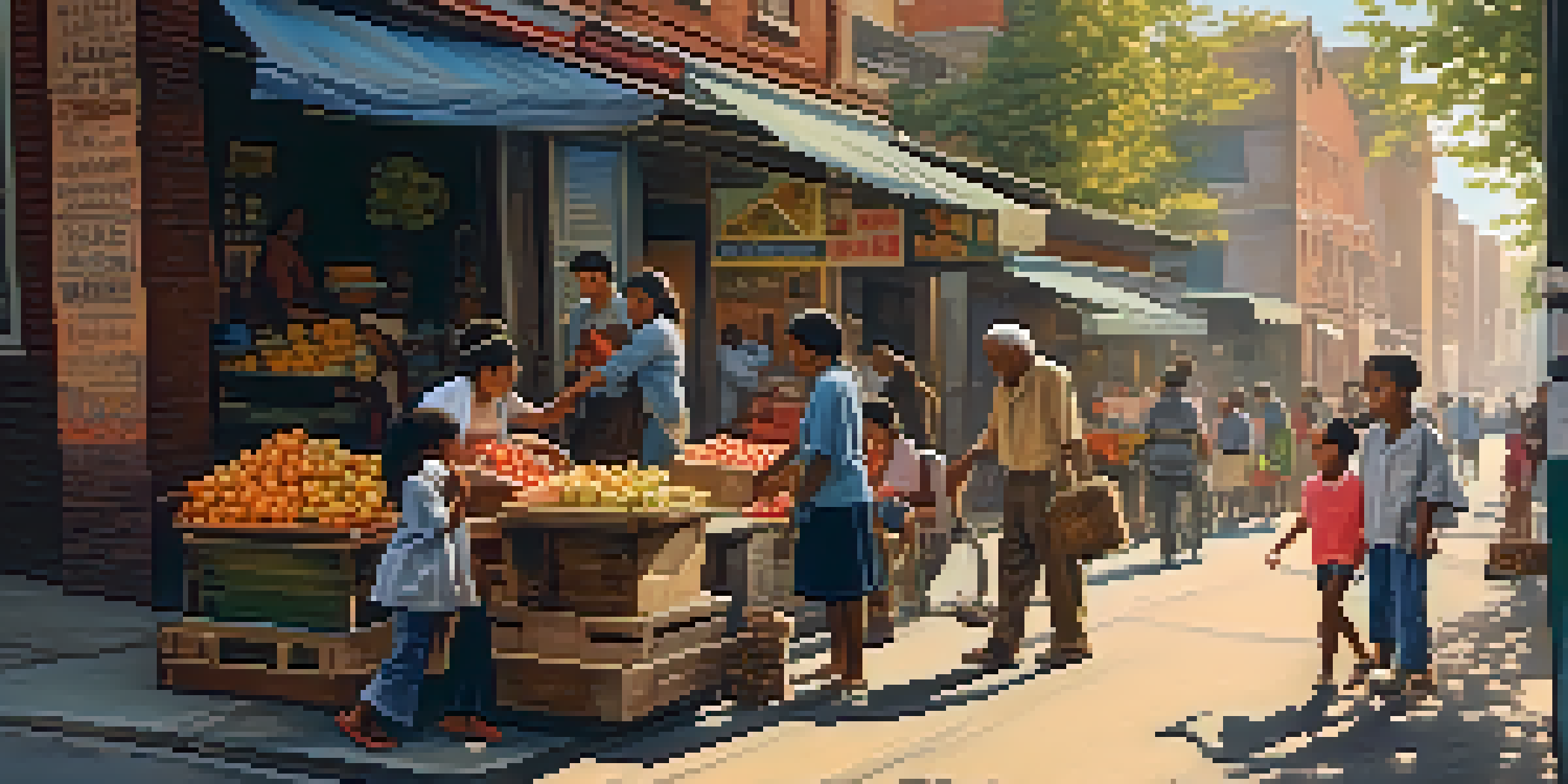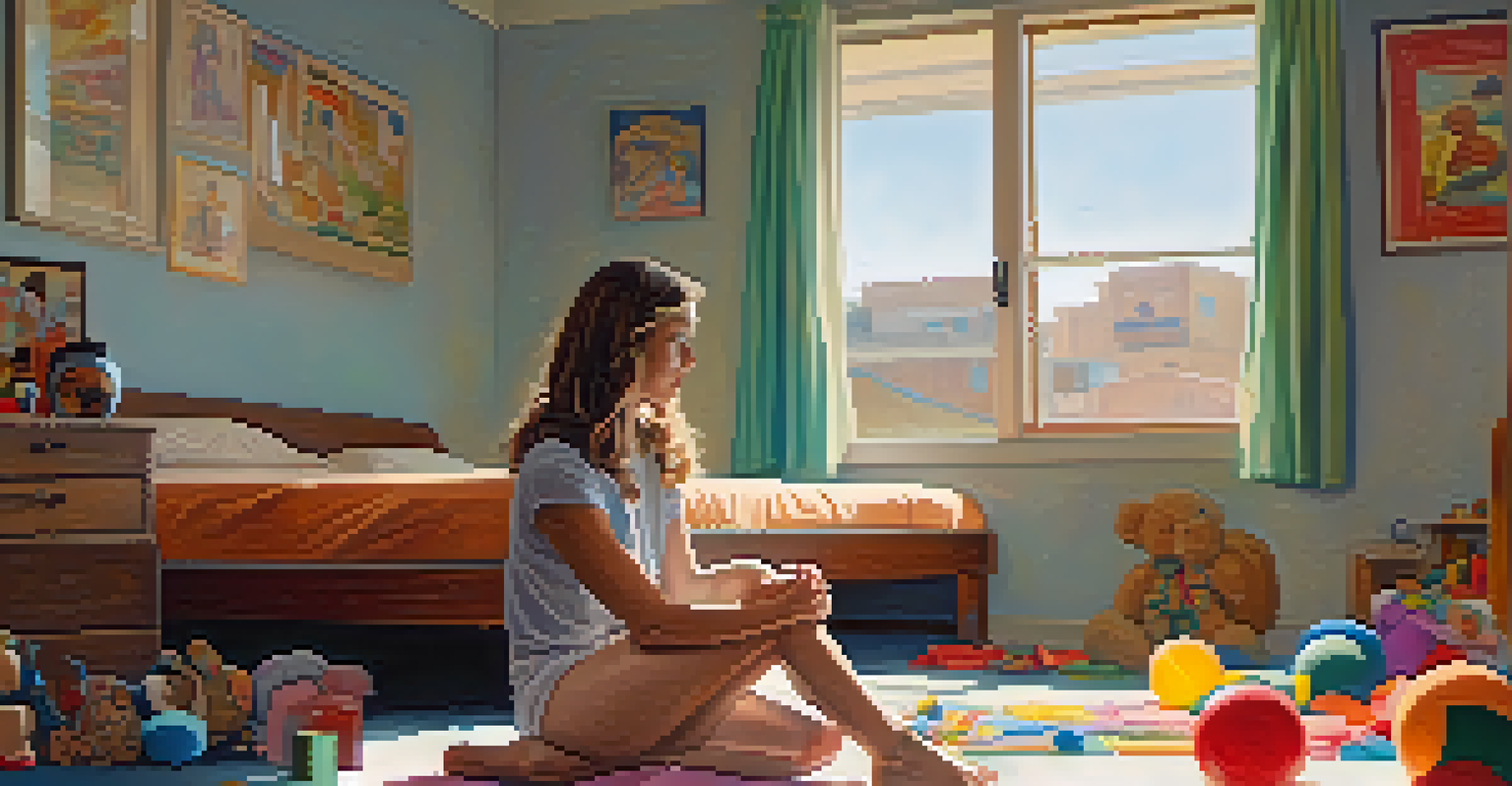Social Realism in Film: Historical Context and Examples

Understanding Social Realism: A Brief Overview
Social realism in film is an artistic movement that aims to depict everyday life and social issues through a realistic lens. It often focuses on the struggles of the working class and marginalized groups, highlighting their challenges and triumphs. This genre emerged as a response to the idealized portrayals of life in earlier cinematic forms, pushing for a more authentic representation of society.
Social realism is about human experience, and it is about the experience of the human condition.
The roots of social realism can be traced back to the early 20th century, gaining momentum during the Great Depression when filmmakers sought to reflect the harsh realities faced by many. The movement is characterized by its unembellished storytelling and a commitment to truth, often using non-professional actors and real locations to enhance authenticity. Through this lens, filmmakers encourage audiences to confront the socio-economic issues that affect everyday lives.
By portraying genuine human experiences, social realism serves as a powerful tool for social commentary and change. Its focus on real struggles resonates with viewers, often evoking empathy and prompting discussions about societal structures. As such, social realism remains a vital part of cinematic history, influencing filmmakers and audiences alike.
Historical Context: The Rise of Social Realism
The rise of social realism in film can be linked to significant historical events, such as the Industrial Revolution and the aftermath of World War I. As societies transformed due to urbanization and economic upheaval, filmmakers began to explore these changes through their storytelling. The stark contrast between wealth and poverty became a central theme, drawing attention to the plight of the working class.

During the 1930s, the Great Depression further propelled social realism as filmmakers sought to document the struggles of everyday people. Movies like 'The Grapes of Wrath' illustrated the harsh realities faced by migrant families, showcasing the resilience of the human spirit amidst adversity. This trend continued throughout the mid-20th century, as filmmakers like Italian Neorealists captured post-war life with a raw and unfiltered lens.
Social Realism Depicts Everyday Struggles
Social realism in film aims to portray the authentic experiences and challenges of the working class and marginalized groups.
The historical context of social realism reflects a desire to challenge prevailing narratives in cinema. By focusing on the lives of ordinary people, filmmakers sought to elevate their stories and advocate for social justice. This movement not only influenced film but also sparked dialogue about social issues in broader society.
Key Characteristics of Social Realist Films
Social realist films are marked by several key characteristics that set them apart. One prominent feature is their focus on everyday life, often portraying the mundane yet profound experiences of ordinary people. This approach helps to create a relatable and immersive experience for the audience, drawing them into the characters’ realities.
Cinema is a mirror by which we often see ourselves.
Another hallmark of social realism is the use of authentic settings and non-professional actors. By filming in real locations and casting individuals who reflect the characters' backgrounds, filmmakers enhance the believability of the narrative. This commitment to authenticity allows viewers to engage more deeply with the story and its themes.
Moreover, social realist films often tackle challenging subjects such as poverty, inequality, and social injustice. These films aim not only to entertain but also to provoke thought and inspire action, encouraging audiences to reflect on their own societal contexts. This dual purpose underscores the genre's significance as both an art form and a vehicle for social change.
Influential Social Realist Films in History
Several films have made a significant impact within the social realism genre, shaping its evolution and influence. One notable example is 'Bicycle Thieves' (1948), an Italian Neorealist masterpiece that tells the story of a father searching for his stolen bicycle, which is essential for his job. This film exemplifies the emotional weight and realism that social realist films strive to convey.
Another key film is 'The Grapes of Wrath' (1940), based on John Steinbeck's novel. It follows the Joad family as they navigate the hardships of the Great Depression, showcasing the resilience of the human spirit amidst adversity. The film not only highlights social issues but also resonates with audiences through its heartfelt storytelling.
Historical Roots Influence Filmmaking
The rise of social realism is linked to significant historical events, such as the Great Depression, which inspired filmmakers to document the struggles of ordinary people.
More recent examples include 'The Florida Project' (2017), which portrays the struggles of a young mother living in a budget motel near Disney World. This film offers a raw and intimate look at poverty and childhood, reminding viewers of the harsh realities faced by many in modern society. Together, these films illustrate the enduring power and relevance of social realism in cinema.
Social Realism Across Different Cultures
While social realism is often associated with Western cinema, its influence can be seen across various cultures and regions. In India, for instance, films like 'Paanch' and 'Gandu' explore social issues, often reflecting the complexities of life in urban environments. These films challenge societal norms and bring attention to the struggles faced by marginalized communities.
Similarly, in Latin America, filmmakers like Fernando Meirelles have created works such as 'City of God,' which delves into the harsh realities of life in Brazilian favelas. This film highlights the impact of poverty, crime, and violence, resonating with audiences worldwide. Through such narratives, social realism becomes a universal language for addressing social issues.
Moreover, social realism continues to adapt and evolve, incorporating unique cultural elements while maintaining its core focus on real-life experiences. By transcending geographical boundaries, social realism fosters a global dialogue about shared human struggles, creating a sense of solidarity among diverse audiences.
The Role of Social Realism in Contemporary Cinema
In today's film landscape, social realism remains as relevant as ever, inspiring a new generation of filmmakers. Many contemporary films explore pressing social issues, from immigration to systemic racism, through a realist lens. This trend reflects a growing awareness of the power of storytelling to advocate for change and amplify marginalized voices.
Streaming platforms have also played a significant role in the resurgence of social realism, providing filmmakers with greater opportunities to showcase their work. Films like 'Nomadland' (2020) highlight the struggles of individuals living on the fringes of society, drawing attention to important social conversations. This accessibility allows diverse stories to reach wider audiences.
Global Impact of Social Realism
Social realism transcends cultural boundaries, addressing universal social issues and fostering dialogue among diverse audiences.
As social realism continues to evolve, it remains a vital part of cinema's ability to reflect and critique society. By grounding narratives in authentic experiences, filmmakers encourage audiences to engage with complex issues and consider their implications in the real world. This ongoing dialogue is essential for fostering empathy and understanding in an increasingly interconnected society.
Critiques and Challenges of Social Realism
Despite its significance, social realism in film is not without its critiques. Some argue that the genre can be overly grim or pessimistic, focusing too heavily on the negative aspects of life without offering solutions or hope. This can lead to a sense of despair among audiences, overshadowing the resilience and strength of the human spirit.
Additionally, there are concerns about the authenticity of representation in social realist films. Critics point out that filmmakers, particularly those from privileged backgrounds, may inadvertently misrepresent the experiences of marginalized groups. This raises questions about who gets to tell these stories and the potential for exploitation or stereotyping.

However, these critiques also present opportunities for growth and reflection within the genre. By encouraging filmmakers to approach storytelling with sensitivity and authenticity, social realism can evolve to better represent the diverse voices and experiences within society. This ongoing dialogue is crucial for ensuring that social realism remains a relevant and impactful form of cinema.